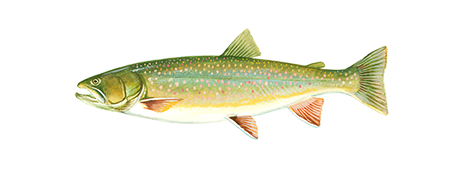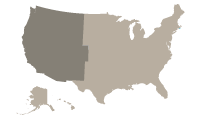
Bull Trout
Bull trout are considered excellent water quality barometers due to their need for very clean and clear water to survive.

Region
West
Catch ease
Medium
Habitat
Lake, River, Pond
How to identify a Bull Trout
The bull trout resembles the Dolly Varden in external characters, and will probably require laboratory analysis by a scientist familiar with the species to be positively identified. As a rule one can be fairly certain that any char other than the lake trout (S. namaycush) or brook trout (S. fontinalis), weighing over 12 pounds and taken in the areas mentioned, will prove to be a bull trout.
Where to catch Bull Trout
Endemic to the Pacific Northwest, the bull trout inhabits most of the major drainages on both sides of the Continental Divide. It seems to prefer large, cold rivers and lakes draining high mountainous areas, and tends to frequent the bottoms of deep pools. It has been recorded in northern California, Oregon, Washington, northern Nevada, Idaho, western Montana, Alberta and British Columbia, Canada. The following list includes additional details on where to catch this fish:
| Backflow |
| Holes |
| Open Water |
| Rivers and Streams |
| Dams and Falls |
| Eddies |
| Small Pointed Waves |
| Undercuts |
| Freshwater Lakes and Ponds |
| Inlets and Outlets |
| Outsides of Bends |
| Rock and Boulder Pockets |
| Drop-Offs |
| Merging Currents |
| Standing Waves |
| Current Edges |
How to catch Bull Trout
The bull trout and the Dolly Varden are not as highly rated as a game fish as most other members of the Salmonidae family, but they do have considerable sporting and food value and are gaining esteem. The following are fishing methods used to catch this fish:
Bull Trout lures, tackle & bait
The following are lures, tackle or bait that can be used to catch this fish:
